
- January 29, 2022
- 94
- Uncategorized
Hypothyroidism (also called underactive thyroid, low thyroid or hypothyreosis is a disorder of the endocrine system in which the thyroid gland does not produce enough thyroid hormone leading to a deficiency of thyroid hormone, including hypothalamic or pituitary disease and generalized tissue resistance to thyroid hormone and disorders that affect the thyroid gland directly. The global incidence of hypothyroidism is increasing as the thyroid gland easily responds to stimuli like stress and anxiety. Recent statistical study reveals that the iodine deficiency is the most common cause of hypothyroidism. According to World Health Organisation, 2 billion people are iodine deficient worldwide. The relative iodine deficiency causes Goiter and severe deficiency causes Hypothyroidisim and Cretinism. On the other hand oversupply of iodine results in autoimmune thyroid disease. Hypothyroidism (congenital) occurs 1 in 4000 new- born worldwide whereas in India it is 1 in 2640 newborns. Females are more affected than males (6:1 ratio). Whites and Asians are more affected population. 80% of all Thyroid disease is diagnosed as Hypothyroidism.
hyroid Gland Anatomy
Thyroid gland is an endocrine gland situated in the lower part of the front & sides of the neck. It lies anterior to trachea between the cricoid cartilage and supra-sternal notch. It consists of two lobes connected by isthmus weighs 12-20gm (5cm x 2.5 cm x 2.5cm). It is a highly vascular deep neck structure which is soft in consistency and lies against C5, C6, C7 and T1. The arterial supply is from superior and inferior thyroid arteries which are in turn supplied by external carotid and subclavian arteries respectively. The venous drainage is in to superior, middle and inferior thyroid veins which drain in to internal jugular vein and brachio-cephalic vein. Lymph drains into deep cervical lymph nodes. Nerve supply is from middle, superior and inferior cervical ganglion. Along with thyroid gland there are 4 parathyroid glands which are located at the four posterior poles of thyroid gland. Thyroid gland is larger in females and increases in size during pregnancy and menstruation and decreased during menopause.
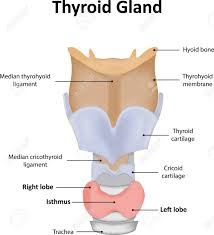
Thyroid Gland Histology
Thyrroid gland consists of numerous spherical follicles lined with cuboidal epithelial cells which are called thyroid follicular cells. The follicular cavity is filled with a colloidal substance called thyroglobulin, which is secreted by the cuboidal epithelial cells which is the protein precursor of thyroid hormones. The follicular cells secrete Triiodothyronin T3 and Tetraiodothyronin (Thyroxine) T4. In between follicular cells, the para-follicular cells are pre- sent, which secrete calcitonin. T3& T4 are iodine containing derivatives of aminoacid tyrosine.
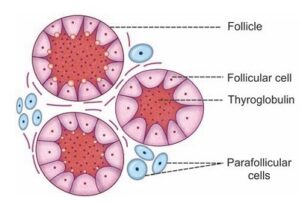
Synthesis of Thyroid hormones
It consists of mainly 5 steps
- Thyroglobulin secretion
- Idodide pump
- Oxidation of Iodide
- Iodination of Tyrosine
- Iodothyronins
Transport of Thyroid hormones in blood
The 80 % of thyroid hormones are transported by Thyroxine binding globulin and 10% by Albumin and Transthyretin (Thyroxine binding prealbumin) respectively. Any defect in the stages of synthesis or transport of thyroid hormones will eventually result in Hypothyroidism.
Functions of Thryroid Hormones
- Growth and development- for normal axonal and dendritic development myelination and linear growth with maturation of growing epiphyseal end plates.
- Energy Metabolism- stimulates BMR ,oxygen consumption & heat production
- Nervous system-It regulates nervous system activity by exerting effect on adrenergic receptors.
- Heart- T3 maintains normal myocardial contractility.
- Muscle- normal skeletal muscle function is regulated
- Respiratory system- Lung volume and breathing capacity is maintained
- Skin- Normal cutaneous circulation and secretion of glands
- Colon- helps in controlling normal bowel movements
- Vitamins- increases utilization and clearance of vitamins.
- Carbohydrate metabolism –stimulates absorption of glucose from intestine.
- Protein metabolism- increases the synthesis of proteins in the cells
- Fat metabolism- decreases fat storage by mobilizing it and converting in to free fatty acid.
- Action on sleep – hyposecretion of hormone causes excess sleep and hyper secretion causes sleeplessness.
- Action on sexual function – helps in normal sexual development & reproductive function
HPT AXIS
Hypothalamo –Piturary -Thyroid axis regulates the secretion of Thyroid hormones by the negative feedback mechanism. Hypothalamus secretes Thyrotropin releasing hormone (TRH) which stimulates Anterior pituitary which in response secretes Thyroid Stimulating hormone (TSH). TSH stimulates Thyroid gland to secrete Thyroid hormones T3 and T4. When the level of T3 and T4 exceeds the normal limit, it sends negative feedback to Anterior pituitary which in turn reduces the secretion of TSH.
Pathogenesis of Hashimoto’s Thyroiditis
The Lymphocytic infiltration in thyroid follicles causes the germinal centre formation. The atrophy of follicles results in oxyphil metaplasia. The absence of colloid matter and fibrosis happens which eventually leads to Atrophic thyroiditis.
Pathogenesis of Autoimmune Hypothyroidism
The pathogenesis of autoimmune hypothyroidism is uncertain. Various hypotheses for etiological factors are combination of genetic and environmental factors, HLADR polymorphism, T cell regulatory gene, sex steroid effects, Immunological effects, Direct thyroid toxicity, congenital rubella infection, Thyroid lymphocyte infiltrate, Antibodies to Thyroglobulin and Thyroid peroxidise enzyme.
Signs:
The signs of hypothyroidism include
- Dry &coarse skin
- Cool extremities
- Myxedema
- Diffuse alopecia
- Bradycardia
- Peripheral edema
- Delayed tendon reflexes,
- Carpel Tunnel syndrome and
- Serous cavity effusions.
Symptoms: The symptoms of hypothyroidism include
- Tiredness
- Weakness
- Dry skin
- Feeling cold
- Hair loss
- Difficulty in concentrating
- Poor memory
- Impaired
- Hearing
- Constipation
- Weight gain with poor appetite
- Dyspnoea
- Hoarse voice
- Menorrhagia
Level of TSH:
0.0- Hyperthyroidism,
0.4- 2.5- Normal range
2.6-4.0- At risk
4.1-10.0- Hypothyroidism
Treatment: The modern treatment is hormone replacement therapy by Levothyroxine. The daily replacement is needed ie.1.6μg/Kg body weight (average 100- 150μg). Levothyroxine is Synthetic T4 under brand names Levothyroid, Levoxyl, Synthyroid, Tirosint, Unithroid, Thyronorm, Eltroxin, Cytomel, Thyrolar. The treatment is accompanied with a host of side effects like High Blood Pressure, Infertility, Weight Loss, Impaired Diastolic function and exercise capacity, Increased Intima media thickness and increased risk of coronary heart disease.
ANALYSIS OF HYPOTHYROIDISM IN AYURVEDIC VIEW:
In Charaka Samhita, Ashta nindita purushas have been discussed which can be taken as functional disorders of endocrine gland.
INVOLVEMENT OF TRIDOSHA
| 1
|
Weight Gain | Kapha vruddhi (increase of kapha) , Pitha kshaya(decrease of pitta) |
| 2 | Puffiness of body features | Kapha Vruddhi (increase of kapha)
|
| 3 | Loss of appetite | Kapha Vruddhi(increase of kapha),Pitta Kshaya |
| 4 | Dry & coarse skin | Vata Vruddhi (increase of vata), Pitta Kshaya decrease of pitta) |
| 5 | Minimal or absent sweating | Pitta Kshaya (decrease of pitta) |
| 6 | Anaemia | Kapha-Vata Vruddhi ( increase of kapha and vata) , Pitta Kshaya(decrease of pitta) |
| 7 | Constipation. | Vata Vruddhi(increase of vata) |
| 8 | Hoarseness of Voice | Kapha- Vata Vruddhi(increase of kapha and vata) |
| 9 | Generalised Aches, Pain
|
Vata Vruddhi(increase of vata) |
| 10 | Muscular cramps, stiffness
|
Vata Vruddhi(increase of vata) |
| 11 | Sluggishness | Vata vriddhi(increase of vata) |
Kapha- Utkrishta Vriddhi(severe increase), Vata- Alpa/Madhyama Vriddhi(mild to moderate increase), Pitha- Utkrishta Kshaya(severe depeletion)
Involvement of Dhatu (Bodily tissues)
| 1
|
Rasa (liquid carrying dissolved nutrients) | Weight Gain, Loss of appetite, Heaviness of body, Lethargy, Generalised aches, Somnolence, premature aging symptoms like hairloss, Cold intolerance, Puffiness, Anaemia, Menustral disturbances, Infertility
|
| 2 | Rakta (blood) | Slow pulse rate, Dry skin, Slowing of mental activity, Lethargy
|
| 3 | Mamsa (muscles) | Heaviness in the body, Muscle ache, granthi, Galaganda
|
| 4 | Medus (flesh/ adipose tissue) | Medus : Tiredness, Sleepiness, sluggishness, Hyperlipidemia, Dysnpnea
|
| 5 | Asthi(bone) | Osteoporosis, Osteoarthritis
|
| 6 | Majja(bone marrow) | Osteoporosis
|
| 7 | Sukra (component having reproductive capacity) | Loss of libido, infertility
|
Involvement of Agni in Hypothyroidism
Jataragni is the raison de etre of life, colour, strength, health, enthusiasm, plumpness, complexion, Ojas, Tejas, other varieties of Agni and Prana. Extinction of this Jataragni leads to death; its proper maintenance helps a person to live a long life, and its impairment gives rise to diseases. It is Agni alone represented by Pitta in the body which brings about good or bad effects according to its normal or abnormal state, eg: digestion or indigestion, vision or loss of vision, normalcy or otherwise of bodily heat, normalcy or otherwise of complexion, valour and fear, anger and joy, bewilderment and happiness and such other pairs of opposite qualities.
Bhutagni – helps Iodine Selective trapping of iodide, transport, uptake by thyroid cells, organification
Dhatwagni – unstable portion of dhatu is vitiated leading to Dhatwagni mandya (sluggish functioning of the body tissues)
According to the principles of Ayurveda, we find that hypothyroidism is basically caused due to dysfunctioning of the Agni. Hypofunctioning of Jatharagni, which in turn, affects Dhatvagni, eventually, brings out pathological sequence and ultimately, the diseased condition developed and can be considered as Kaphavrit agnimandya janya disease. According to Acharya Vagbhata, considering Doshika dominance, Kapha associated Pitta Dushti with vitiation of Vata due to Margavarana and predominantly Rasa-vaha, Medo-vaha and Mamsa-vaha Srotodushti can be considered as cause of the disease.
Samprapthi Ghataka
- Dosha- aggravation of kapha (Kapha vruddhi),vitiation of pitta (pitta dushti), aggravation of vata (vata vruddhi)
- Dushya- all dhatus predominantly rasa and medha
- Agni- Jatharagni, Dhatvagni (digestive fire and bodily tissues functions)
- Ama- Jatharagni mandya janita, (sluggishness of digestive fire)
- Dhatvagnimandya janita (sluggishness of bodily tissues functions)
- Srotas- all srotas ( all channels of transport)
- Srotodushti- sanga, vimarga gamana (obstruction in the channel pathways and false passage)
- Adhishtana- gala pradesha (seat of disease : neck region)
- Udhbava sthana- Amashaya (seat of origin of disease :stomach)
- Rogamarga- Bahya (route of disease – external)
- Vyakta sthana- Sharira (area of manifestation of disease- whole body including all organ systems)
TREATMENT
Samshodana Chikitsa (purificatory procedures)
- Snehapana (oleation therapy) – Amrutadya taila, Thumbi taila, Go ghrita
- Vamana (Therapeutic emesis) – with madana phala pippali
- Mrudu Virechana (Therapeutic purgation) – Gandharva hastyadi taila or trivrut
- Nasya (medicated errhines) – Jeerna karkaru swarasa
MEDICINES
Kashya kalpana
- Varunadi kashyam : 15 ml + 45 ml lukewarm water; twice daily before food
- Asanadi Kashayam :15 ml + 45 ml lukewarm water; twice daily before food
- Vatsakadi Kashayam :15 ml + 45 ml lukewarm water; twice daily before food
- Guggulutiktaka Kashyam :15 ml + 45 ml lukewarm water; twice daily before food
Churna Kalpana
- Shaddharana Churna : half to 1 teaspoon along with warm water; twice daily after food
- Vyoshadi Churna: 5 grams along with honey, lukewarm water after food
- Guggulu panchapalam Churna : 1 to 3 grams along with honey after food
- Abhaya Churna : 1.5 grams along with warm water; twice daily after food
Vati Kalpana
- Kanchanara guggulu 2 tablets twice daily with normal water
- Triphala guggulu: 2 tablets twice daily with normal water
Arishta Kalpana
- Amrta arishtam : 30 ml twice daily after food
- Abhayarishtam : 30 ml twice daily after food
- Ayaskriti : 30 ml twice daily after food
Rasayana
- Shilajatu
- Pippali
- Chitrakam
Rasaoushadi
- Mandura Bhasma : 250 mg per day with honey
- Swarna Bhasma : 15-30 mg per day with honey or ghee
- Abraka Bhasma : 125- 250 mg twice a day with honey or ghee
Lepas
- Nichuladi lepa – external application
- Devadaru vishala lepa – external application
- Hastikarna palasha lepa – external application
- Sarshapadi pralepa – external application
Single drugs that can be used commonly after purification procedures to control the remaining dosha.
- Pippali (Piper longum)
- Bhallataka (Semicarpus anacardium)
- Punarnava (Boerhavia diffusa)
- Amrit (Heart-leaved moonseed)
Yogasanas
- Halasanam (Plough pose)
- Paschimothanasanam (Seated forward bend)
- Matysaasanam – (Fish Pose)
- Sarvangasanam (shoulder stand)
- Pavanamuktasanam(wind relieving pose)
- Suryanamaskaram (sun salutation)
- Simhagarjanasanam (lion pose)
- Kandarasanam (shoulder pose)
- Setu Bandhasana (bridge pose)
- Viparita Karani (Inverted Pose)
- Dhanurasana (bow pose)
- Bhujangasana (cobra pose)

Halasanam (Plough pose)

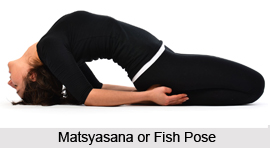
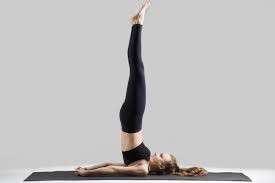





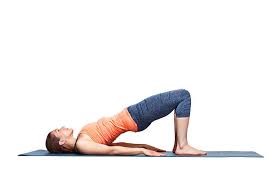

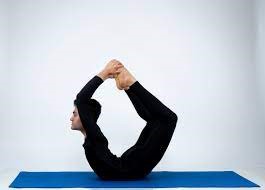

The breathing exercises: Pranayamam-Sheetali, Seethkara, Sadanda, Bastrika, Anuloma viloma pranayam and Ujjay swasa aids the healthy functioning of thyroid gland.
PATHYA – Dos
- Purana Ghrita pana/ Old Ghee
- Jeerna Lohita shali/ Old Red Rice
- Yava/ Barley
- Mudga/ Green Gram
- Patola/ Bittergourd
- Rakta shigru/ Drumstick
- Kathillaka/ Spreading Hogweed
- Vetagra/ Bamboo
- Ruksha, Katu / Dry And Spicy Foods
- Deepana dravya (drugs which aids in digestion)
- Guggulu / Indian bdellium-tree
- Shilajatu/ Shilajit
APATHYA- Don’ts
- Kshira Vikruti / dairy products
- Ikshu Vikruti/ sugarcane products
- All types of meat / saline and aquatic
- Pishtaannam/ food prepared of flour
- Sweet and sour tastes
- Heavy foods
- Abhishyandakari/ foods which causes obstruction of channels
Editor: Dr. Anu PK
Email: editor@ayurvedam4you.webc.in





Add Comment